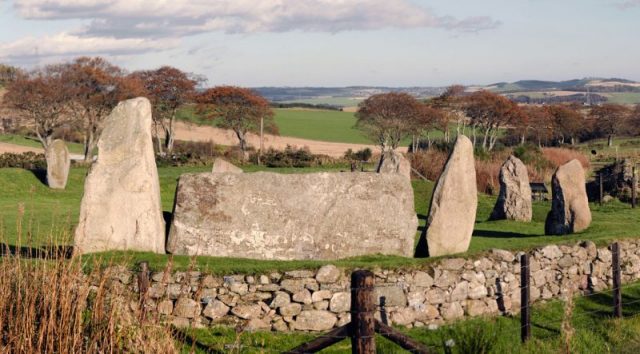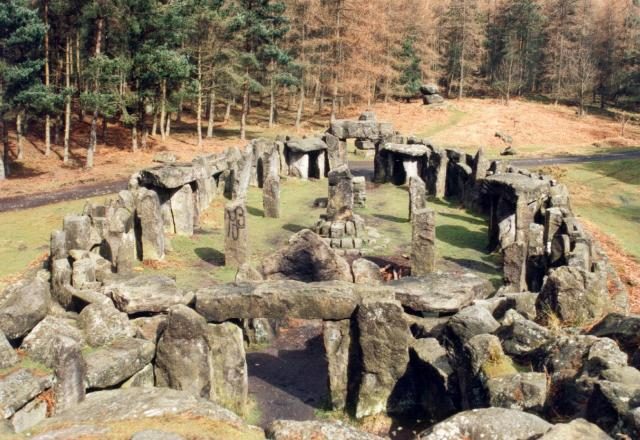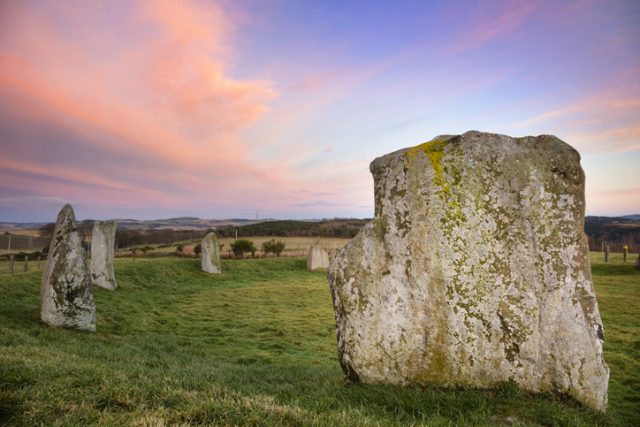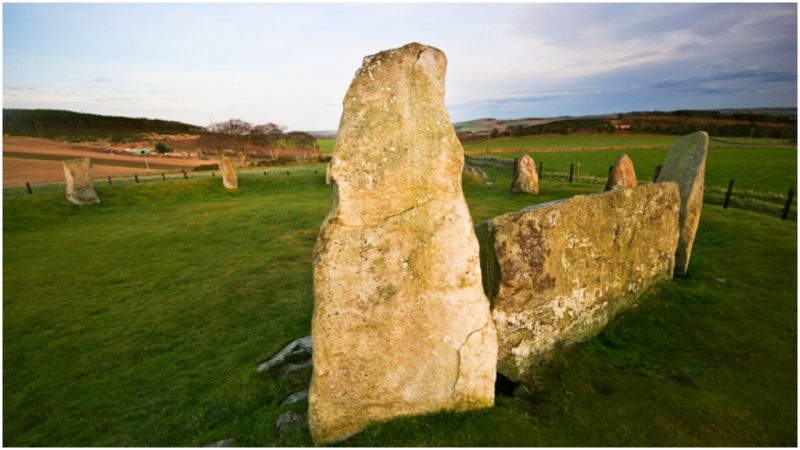Archaeologists studying a stone circle they believed to be thousands of years old were left embarrassed, when the former owner of the land admitted he’d built it in the 1990s.
According to The Guardian, the stone circle in Leochel-Cushnie in the northeast of Scotland was being studied by Historic Environment Scotland and Aberdeenshire Council archaeology service.
Appearing to be a recumbent stone circle, it struck archaeologists as worthy of study due to its unusually small diameter and the small size of its stones.

Recumbent stone circles are only found in Aberdeenshire in the northeast of Scotland, and Cork and Kerry in the southwest of Ireland.
Of approximately 200 known to exist, 99 of them are Scottish. They are made up of a ring of vertical upright stones and single recumbent horizontal one which is often raised on a bed of earth so that it has the same height as the other stones.
The Aberdeenshire stones were believed to have been used for astronomical purposes, as generally the horizontal stone is set on the southwestern side of the circle and once every 18 and half years the moon appears to be lower to the Earth (called a lunar standstill) and look as if it is “framed” above the horizontal stone.

Further evidence of sacred ritualistic use comes from the recovering of shards of pottery and charred human bones, and shards of glittering quartz crystal were scattered around the recumbent stone, perhaps to reflect the moonlight.
They’ve fascinated people for centuries. Antiquarians attributed them to the druids, the semi-mythical pagan priesthood of the Celts, and called them “Druid’s Temples” or “Druid Circles” — with the recumbent stone referred to as “the altar.”
In reality, very little is known of the belief systems of the ancient cultures who inhabited Britain, only the propaganda of the later Roman invaders, and the romantic fantasies of more recent writers.

With few facts to explain their purpose or indeed how these massive stones were moved into place, communities local to recumbent stone circles resorted to folklore instead.
Many recumbent stone circles have tales of guardian spirits or hidden treasure fixed to them. Hollow indentations in the stones were sometimes said to be the sinister cloven hoof marks of the Devil, while horizontal stones were described as the seats of early Christian saints and missionaries, especially if they were near to churches or other religious sites.
Aberdeenshire’s recumbent stone circles were erected between 3,000 and 2,500 BC during the late Neolithic and early Bronze Age — with one exception, of course. Not an intentional hoax, the Leochel-Cushnie stone circle was built in the Nineties as a replica, but when the farm which owned the land was sold, the new owners thought it was real and reported it to the authorities.

Neil Ackerman, the historic environment record assistant at Aberdeenshire council, tried to look on the bright side.
“It is obviously disappointing to learn of this development, but it also adds an interesting element to its story,” Ackerman told the Guardian. “That it so closely copies a regional monument type shows the local knowledge, appreciation and engagement with the archaeology of the region by the local community.
“I hope the stones continue to be used and enjoyed. While not ancient, it is still in a fantastic location and makes for a great feature in the landscape.”
Ackerman added: “These types of monument are notoriously difficult to date. For this reason we include any modern replicas of ancient monuments in our records in case they are later misidentified.
Read another story from us: 4,500-yr-old Stone Pillar Depicts History’s First Known Border Dispute
“We always welcome reports of any new, modern reconstructions of ancient monuments, especially those built with the skill of this stone circle and that reference existing monument types.”
